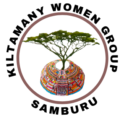About Us
It is located in Kiltamany, Samburu east sub county, the center was started by Indigenous Women from 9 women group with an initiative to carry out development activities which would help them to eradicate poverty in the region and also find solutions to prolonged drought in the area. Climate change has been an issue in the area and the women are the most affected. As nomads, their livestock’s get affected so much by the drought and therefore the women in the region thought coming together and work as a group would help them achieve their main objectives.
The women groups in the center are:
1.Kiltamany Women Group
2.Naapu Women Group
3.Narapulchurai Women Group
4.Naisula Women Group
5.Naisherua Maiyan Women Group
6.Mpakas Women Group
7.Nywat Women Group
8.Naserian Women Group
9.Naitopok Women Group
The main activities carried out by women in the women groups include; Merry-go-round, buying and selling livestock, bee-keeping, tree planting and beads making
Objectives
1.To support Indigenous women to effectively defend their rights.
2.To build and strengthen the capacity of indigenous women.
3.To empower Indigenous women economically.
4.To come up with climate change adaptation and mitigation measures.
